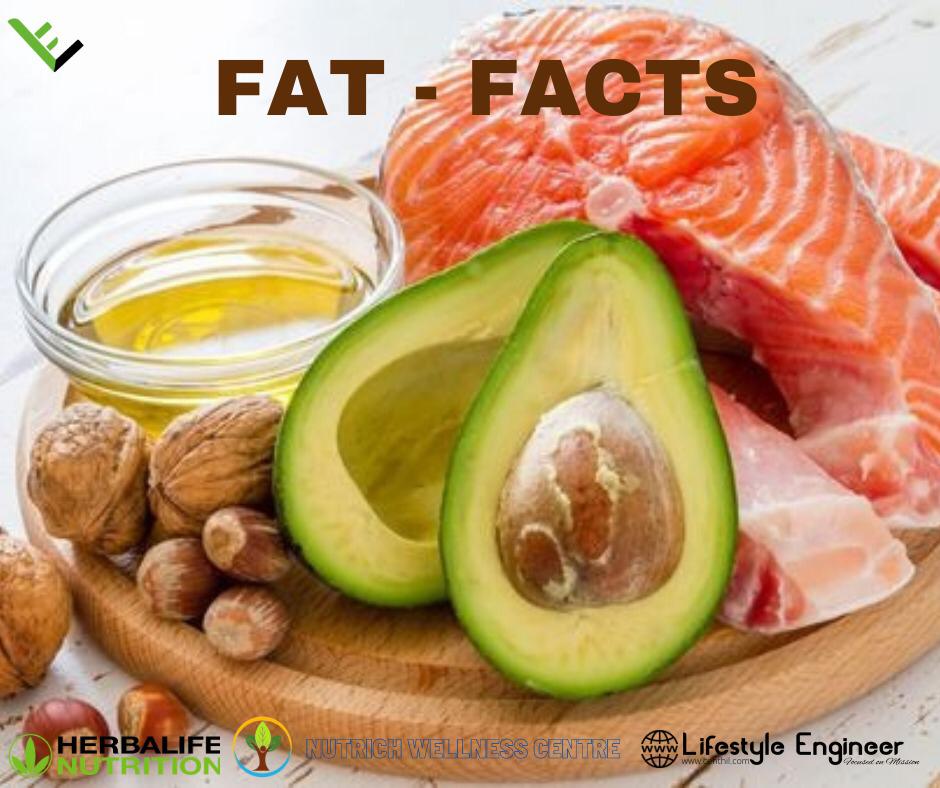DIETARY FATS
WHAT ARE DIETARY FATS?
• Dietary fats are a type of nutrient in food.
• Fat is one of the three macronutrients, a group that also includes protein and carbohydrates.
• Fats are a concentrated form of energy, and protect body tissues and organs and help maintain body temperature. Fats also help the body to use the four fat-soluble vitamins: A, D, E and K.
• 1 gram of fat gives 9 kilocalories.
• Fats, or lipids, play a crucial role in a healthy, balanced diet. For example, without fats we would not be able to utilize fat soluble vitamins, and would be deprived of a major source of energy.
• All fats aren’t bad. Some fats lower your cholesterol level and keeps you healthy. Everyone must need some fat in your diet.
• Dieticians might have recommended that you limit or avoid fat in your diet to prevent weight gain and health problems like heart disease and diabetes.
CLASSIFICATION OF LIPIDS
The classification is important to enable you to advise your community about which fats can be consumed with less risk to people’s health.
Fats are classified into two types majorly.
• Saturated fats
• Unsaturated fats
Saturated vs. Unsaturated Fats
The difference between dietary fats lies in their chemical structure. All fats are made up of a chain of carbon atoms that are linked or bonded to hydrogen atoms.
• In saturated fats, the carbon atoms are totally covered, or “saturated,” with hydrogen atoms. This makes them solid at room temperature.
• In unsaturated fats, fewer hydrogen atoms are bound to carbon atoms. These fats are liquid at room temperature.
Saturated fats
Saturated fats are usually solid at cool temperatures. Eating too much saturated fat is not good for a person’s health, as it can cause heart and blood vessel problems.
A diet rich in saturated fats can drive up your total cholesterol and tip the balance toward more harmful LDL cholesterol, which can lead to blockages in arteries in your heart and other parts of your body. LDL cholesterol raises your risk for heart disease.
• Red meat like beef, lamb and pork
• Skin-on chicken and other poultry
• Whole-milk dairy products like milk, cheese, and ice cream
• Butter
• Eggs
• Palm and coconut oils
Unsaturated fats:
Unsaturated fats are usually liquid at room temperature. These types of fats are healthy fats. Examples include fats from fish, oil seeds (sesame and sunflower), maize oil and ground nut oil and breast milk.
A fat molecule is monounsaturated if it contains one double bond, and polyunsaturated if it contains more than one double bond.
There are two main types of unsaturated fats:
Polyunsaturated fats:
• Omega-3 fats which are found in fish, especially oily fish
• Omega-6 fats which are found in some oils such as safflower and soybean oil, along with some nuts, including brazil nuts.
Monounsaturated fats:
• It is found in olive and canola oil, avocados and some nuts, such as cashews and almonds.
Why do we need fat in our body?
• Dietary fats are essential to give your body energy and to support cell growth.
• They also help protect your organs and help keep your body warm.
• Fats help your body absorb some nutrients and produce important hormones too.
• You also need fat to keep your skin and hair healthy. Fat also helps you absorb vitamins A, D, E, and K, the so-called fat-soluble vitamins. Fat also fills your fat cells and insulates your body to help keep you warm.
Deficiency of fats:
• Dry, scaly rash
• Frequent infections
• Slow wound healing
• Growth delay in infants and children
• Essential Fatty Acid (EFA) deficiency
Excess intake of Fat leads to:
Fats are stored more easily than carbohydrates, and they don’t ramp your metabolism to increase weight loss.
Eating too much saturated fats in your diet can raise “bad” LDL cholesterol in your blood, which can increase the risk of heart disease and stroke and also Obesity occurs
“Good” HDL cholesterol has a positive effect by taking cholesterol from parts of the body where there’s too much of it to the liver.

